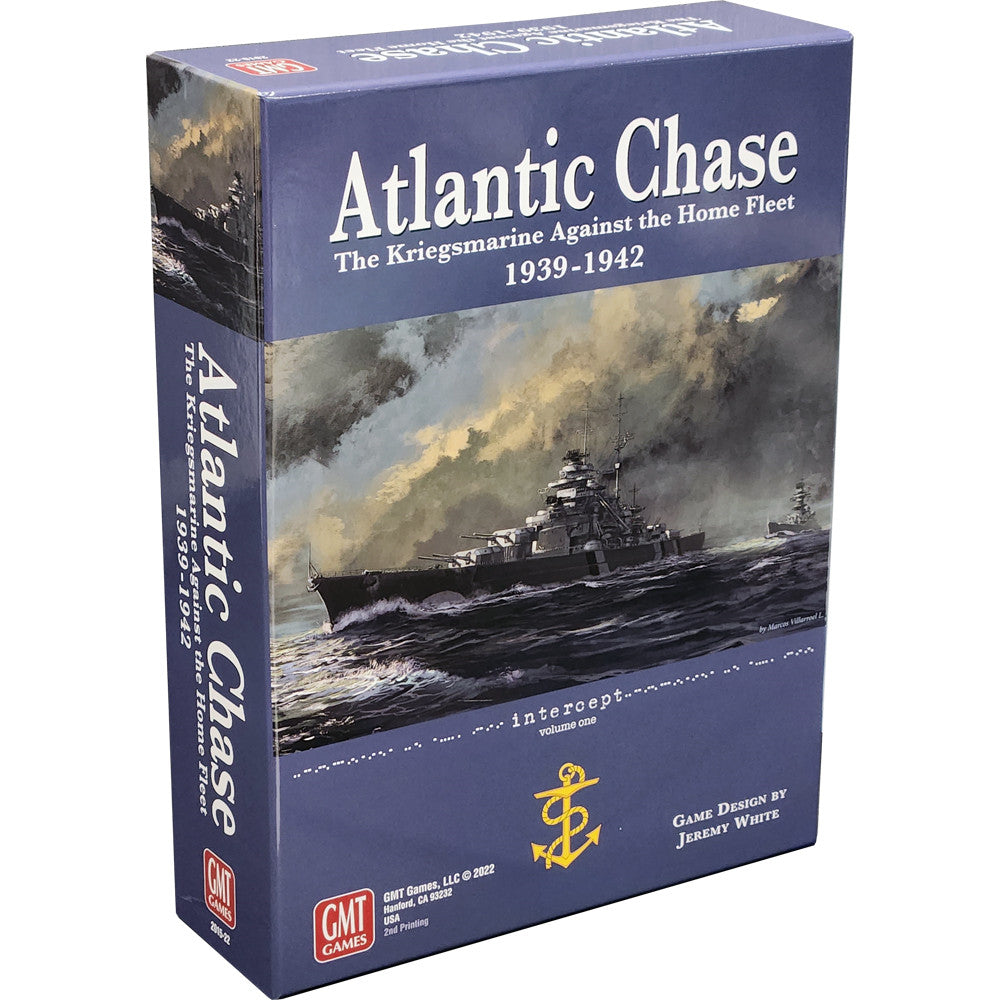Atlantic Chase Warlord Games
$ 85,00 $ 42,50
Atlantic Chase depicts the war in the North Sea, the Norwegian Sea, the North Atlantic, during the crucial period from 1939 to 1942. It is not a game about U-boats; its focus is on the surface fleets of Britain’s Royal Navy and Germany’s Kriegsmarine. The Kriegsmarine’s small but potent fleet of surface vessels had a chance to tip the balance and force more of the Royal Navy’s assets home. Had German assets been employed differently, had chance encounters happened differently, Britain may have found herself at Germany’s mercy. This game explores that balance of power.
Atlantic Chase explores the struggle between the Home Fleet and the Kriegsmarine at an operation scale. Ships are organized into task forces, and the game presents the war as a series of scenarios, each depicting a sortie by German surface assets targeting British trade. Fifteen scenarios are designed for solitaire play, where the player takes the role of the Royal Navy in some and the Kriegsmarine in others. The game also presents two-player scenarios, as well as a two-player campaign system.
The game emphasizes the role information played in structuring naval conflict during World War Two. Inspired by the pins and strings adorning naval charts in places like the Map Room in the Cabinet War Offices under London, a task force on the game boards i represented by either a trajectory or a station, either a line or a point. When a task force is represented as a trajectory, information about it is fuzzy. Neither player knows for sure where the task force is, only that it’s somewhere along that line. When represented as a station, players have more information. They know that task force is somewhere in the stretch of ocean represented by its hexagon.
Atlantic Chase challenges the player to engage enemy naval assets on favorable terms. When a player has the initiative, they perform actions by activating one or more task forces. Most actions provide the opponents a chance to grab the initiative and perform actions of their own. In this way, initiative swings back and forth until one player achieves their operational objectives or forces their opponent under the sea.
Note: This is identical to the 1st Printing, except that any known errata has been corrected.
Contents:
2 Inset Maps (8.5″ x 11″)
3 Player Aids (11″ x 17″)
2 Player Aids (8.5″ x 11″)
2 Task Force Displays
1.5 Countersheets
240 Wood Segments & Cylinders
4 Six-sided Dice
1 Rule Book
1 Advanced Battle Rules
1 Tutorial Booklet
2 Scenario Booklets
‣ Solitaire
‣ Two-player
Ages: 14+
Players: 1-2
Game Length: 60-180 minutes (Scenarios); 240-720 minutes (Campaign)
Fast Delivery and Professional Packaging
Thanks to our longstanding association with UPS FedEx DHL and other major international carriers, we are able to offer a variety shipping options. Our warehouse staff are highly trained and will pack the goods according to our exact and precise specifications. Before shipping, your goods will be carefully inspected and secured. Everyday, we send to thousands of customers in multiple countries. This is a sign of our commitment to be the largest online retailer globally. Warehouses and distribution centers are located throughout Europe as well as the USA.
Note: Orders containing more than one product will be assigned a distinct processing time, depending on the specific item.
Before shipping, we will inspect the ordered items thoroughly before sending the items. Most orders today are shipped in 48 hours. The delivery time is between 3-7 working days.
Returns
The stock is dynamic and we are unable to completely manage it because of the fact that many parties are involved, which includes our warehouse and factory. So the actual stock may alter at any time. Be aware that it is possible that your order will be out of stock after you have made the order.
Our policy is valid for 30 days. We are unable to replace or refund your purchase after 30 days since the purchase.
In order to be eligible for a return, your item must be in good condition and in the same condition as you received it in. It must also remain in the original packaging.
Related products
Board Games
Board Games
Board Games
Board Games
Board Games
Board Games
Board Games
Board Games
Board Games
Board Games
Board Games
Board Games
Board Games
Board Games
Board Games
Board Games
Board Games
Board Games
Board Games
Board Games
















































